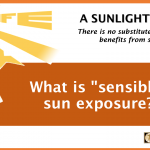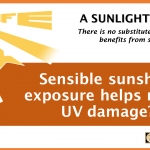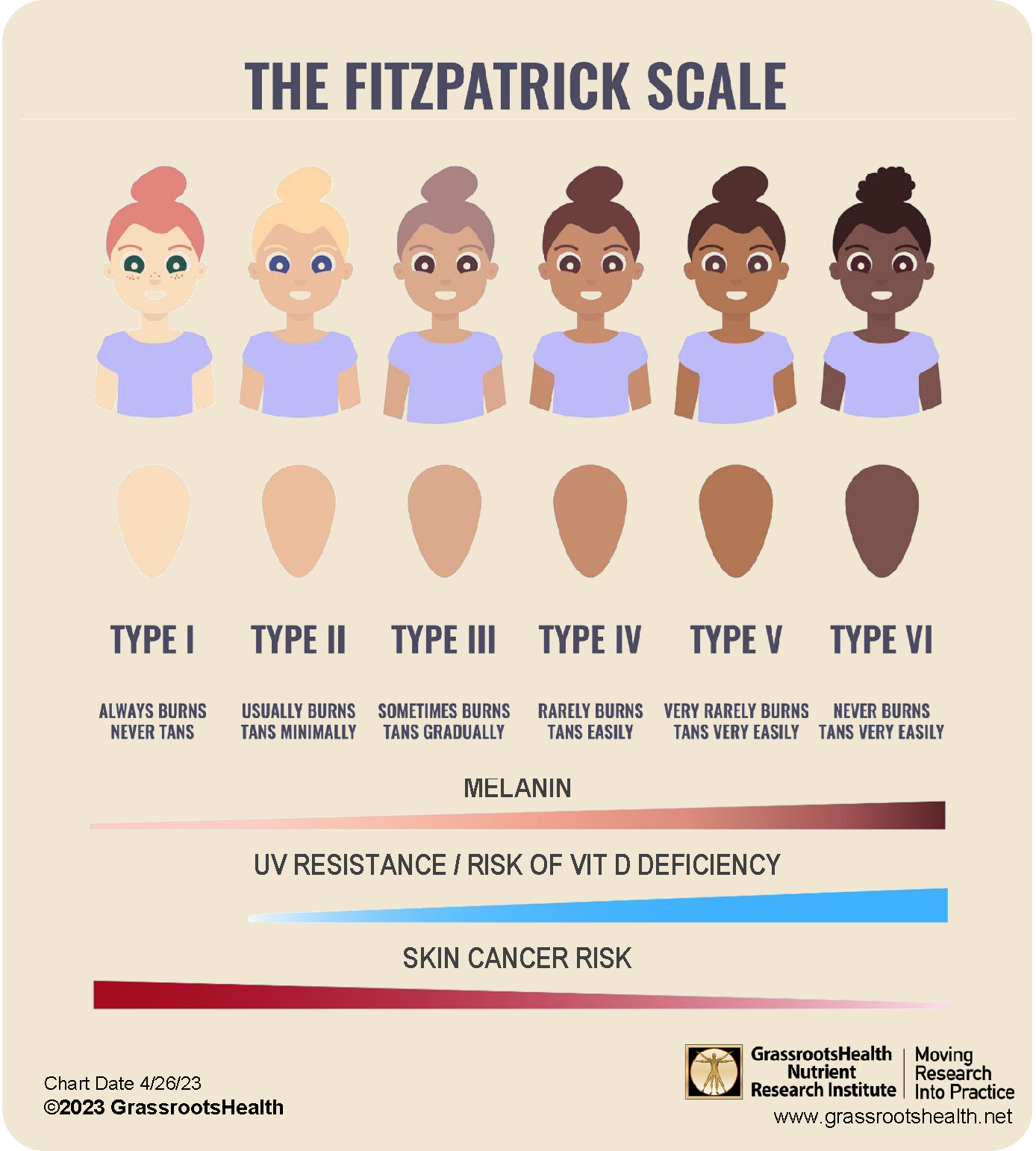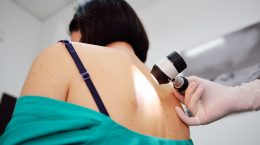Published on May 15, 2023
Melanin, found in higher concentrations in darker skin and generated upon sunshine exposure, is one of the most protective molecules against UV damage
Key Points
- In March 2023, Australia became the first country to provide updated guidelines for sun exposure based on skin type, risk of skin cancer, and risk of vitamin D deficiency, officially recommending increased sun exposure for darker skinned people
- Melanin is a pigment found in higher concentrations in darker skin; it has antioxidant and scavenging properties, and acts as an effective sunscreen by protecting skin cells (malanocytes and keratinocytes) from UV induced DNA damage and is considered one of the most protective molecules in the skin against damage from UV radiation
- A tan is a natural form of protection that helps to reduce the risk of sun damage; the key to utilizing sensible sun exposure to help generate a tan is to determine how much time you can expose your skin to sunlight without burning, and after that amount of time is when it is important to cover up, apply sunscreen, or get out of the sun
For decades, the general recommendation for everyone has been to stay out of the sun, cover up, and apply sunscreen regularly, an approach that is now being questioned by certain authorities due to the many benefits of sensible sunshine exposure, notably the production of vitamin D. Since skin pigmentation plays a protective role against UV damage, while also slowing vitamin D production in the skin, the need for a more individualized approach that considers skin type when making recommendations for sun exposure has become clear and has prompted actions, such as
- in 2016, a meeting sponsored by the US National Cancer Institute called for updated sun exposure guidelines based on individual risk factors, highlighting the beneficial effects of sun exposure, including vitamin D production and nitric oxide release, stating “Reducing risk for one disease should not come at the cost of increasing risk for another.”
- in February, 2022, the World Health Organization hosted a webinar, “Striking a balance: harms and benefits of sun exposure,” which discussed the benefits of sunshine exposure, most notably the production of vitamin D, with an emphasis on how the balance of benefits and harms differs by skin type.
- in March 2023, Australia became the first country to provide updated guidelines for sun exposure based on skin type, risk of skin cancer, and risk of vitamin D deficiency, officially recommending increased sun exposure for darker skinned people. The recommendations are endorsed by the Cancer Council Australia, Skin Cancer College Australasia, Australasian College of Dermatologists, Healthy Bones Australia, The Australian and New Zealand Bone and Mineral Society, Melanoma Patients Australia, and MS Australia.
The updated recommendations revolve around the following concept:
“Sun protection strategies must reflect the understanding that human skin pigmentation evolved to balance the negative and positive effects of sun exposure…” Geller et al. (2018)
Watch the Videos
 Sunlight and Your Health: An EnLIGHTening Perspective
Sunlight and Your Health: An EnLIGHTening Perspective
This video clip from a seminar presentation by Dr. Michael Holick helps explain how melanin and a tan are produced and how it works as natural sun protection. (keep watching from here for more great information!) Watch Now
 What is Sensible Sun Exposure?
What is Sensible Sun Exposure?
“Sensible” sunshine exposure has many benefits for health and can reduce the risks associated with sunburn and over-exposure. But, what is “sensible” sun exposure? Dr. Michael Holick, Ph.D, MD explains. Watch Now
 Can sensible sunshine exposure help repair UV damage from the sun?
Can sensible sunshine exposure help repair UV damage from the sun?
When used sensibly and safely (as in, Don’t Burn!), sunlight induces several processes to repair the DNA damage caused by UV rays. Learn more in this interview snippet with Dr. Michael Holick.
What is the Value of a Tan?
Melanin is a pigment found in higher concentrations in darker skin; it has antioxidant and scavenging properties, and acts as an effective sunscreen by protecting skin cells (malanocytes and keratinocytes) from UV induced DNA damage. It is considered one of the most protective molecules in the skin against damage from UV radiation. This is one reason individuals with darker skin are at a lower risk for skin cancers – because they have more melanin and are therefore less likely to burn.
While the amount of melanin in your skin is primarily genetic, it can also gradually increase through sensible sunshine exposure (aka safe, non-burning tanning), a habit that can result in many other health benefits. When utilizing safe sun exposure to generate a tan, your outermost layers of skin will make melanin. Additionally, the microbes that live on the skin’s surface and thrive with regular, sensible sunshine exposure, also produce melanin and other protective compounds that reduce UV damage, even reducing the amount of reactive oxygen species within the skin cells themselves (Harel et al., 2023).
“Low-dose repeated exposures to UV radiation can increase pigmentation and skin thickness, offering some protection against skin damage during subsequent exposures, a concept called habituation.” (Neale et al., 2023)
Vitamin D is produced in the skin upon exposure to UVB radiation, which also protects against UV damage that can cause skin cancer. Studies have shown that vitamin D produced in the skin can decrease DNA damage in the skin cells and facilitate DNA repair directly upon any UV damage, and help prevent cell death. A study by Rybchyn et al. showed that an adequate supply of vitamin D made available to the skin cells upon UVB exposure increases DNA repair and decreases unresolved damage, so that after 24 hours, DNA repair occurs and skin cells return to their pre-exposure state. The same observation has been made by Bolerazka et al., as the authors state “One of the demonstrated abilities of vitamin D is optimization of DNA repair, which protects against UV-induced mutations, the most common cause of skin cancer in humans,” with an important note about skin cancers, “The dominant risk factor is sunburn and not cumulative sun exposure.”
Another study by Shih et al. aimed to identify the levels of sun exposure that generated vitamin D with minimal skin damage, and found that both vitamin D and DNA damage were produced across all skin types, however, the depth of DNA damage within the skin differed by skin type. Those with the darkest skin had DNA damage only in the surface layers of the skin whereas those with the lightest skin had DNA damage across all skin layers. The study went on to say “People with darker skin can be encouraged to use sub-sunburn UVR-exposure to enhance their vitamin D.”
Get to Know Your Skin Type and What Amount of Exposure is Right for You
“Skin pigmentation is an indispensable photoprotective factor.” (Rai et al., 2022)
Since skin type influences sunburns and sunburns are associated with increased risk for skin cancers and melanoma, it is important to know your skin type to best personalize your sun exposure habits. The Fitzpatrick scale, shown below, classifies six skin types based on their response to UV radiation. The skin type quiz can help you determine your type.
The key is to determine how much time you can expose your skin to sunlight without burning; after that amount of time is when it is important to cover up, apply sunscreen, or get out of the sun. Once you have identified your skin type, you can use tools such as the free dminder app to approximate how much time you can spend in the sun without burning. Whether or not you choose to use an app, it is important to allow skin to gradually acclimate to the sun, especially for those who spend a lot of time indoors, have lighter skin, after winter months, or during sun-seeking vacations. It is safer to increase exposure time gradually as this allows your skin to adapt to the sun’s intensity while safely producing a tan. And, as a tan develops, it will allow for greater amounts of time in the sun with less risk of UV damage.
“A shift toward nuanced messaging, or “precision targeting,” has considerable potential.” (Geller et al., 2018)
– HINT: this precision targeting includes measuring your vitamin D level!
Make Sure You Are Getting Enough of Both Sunshine & Vitamin D
It is important to incorporate safe, sensible sun exposure into a regular routine, just as it is important to make sure you are getting enough vitamin D. Because the sun produces many health-benefiting molecules in addition to vitamin D, sunshine exposure cannot be replaced with taking a supplement.
It is also important not to stop supplementing with vitamin D during the summer. Most people do not make enough vitamin D from sunshine alone, due to their lifestyle and other factors, and therefore must rely on supplementation to maintain optimal vitamin D levels of 40-60 ng/ml (100-150 nmol/L).
This Sunshine Month, get 10% off your home vitamin D blood spot test when using the code SunMonth23 at checkout.
Measure Your Vitamin D Level Today
 Having and maintaining healthy vitamin D levels and other nutrient levels can help improve your health now and for your future. Choose which additional nutrients to measure, such as your omega-3s and essential minerals including magnesium and zinc, by creating your custom home test kit today. Take steps to improve the status of each of these measurements to benefit your overall health. With measurement you can then determine how much is needed and steps to achieve your goals. You can also track your own intakes, symptoms and results to see what works best for YOU.
Having and maintaining healthy vitamin D levels and other nutrient levels can help improve your health now and for your future. Choose which additional nutrients to measure, such as your omega-3s and essential minerals including magnesium and zinc, by creating your custom home test kit today. Take steps to improve the status of each of these measurements to benefit your overall health. With measurement you can then determine how much is needed and steps to achieve your goals. You can also track your own intakes, symptoms and results to see what works best for YOU.
Enroll in D*action and Test Your Levels Today!



 Sunlight and Your Health: An EnLIGHTening Perspective
Sunlight and Your Health: An EnLIGHTening Perspective What is Sensible Sun Exposure?
What is Sensible Sun Exposure? Can sensible sunshine exposure help repair UV damage from the sun?
Can sensible sunshine exposure help repair UV damage from the sun?




